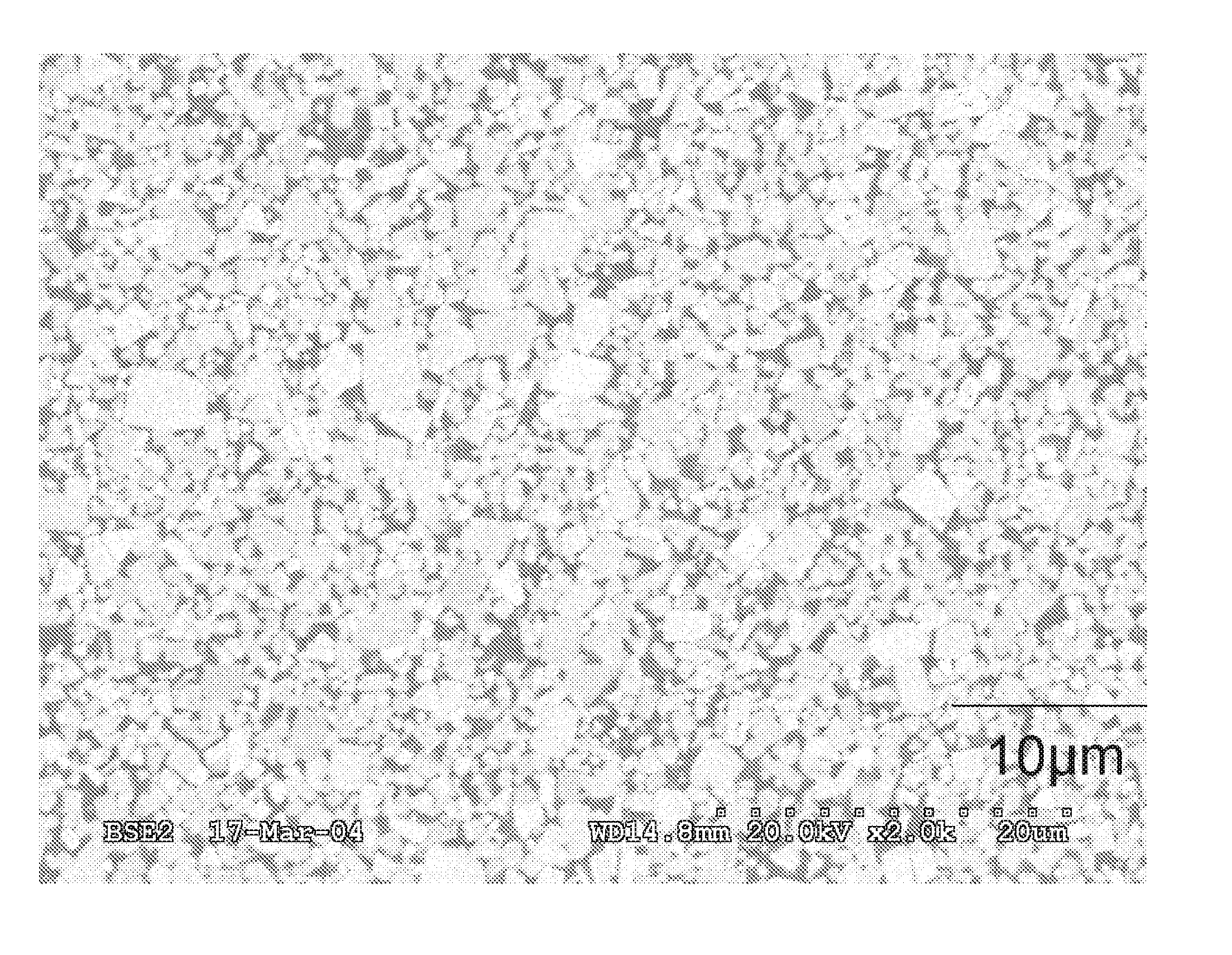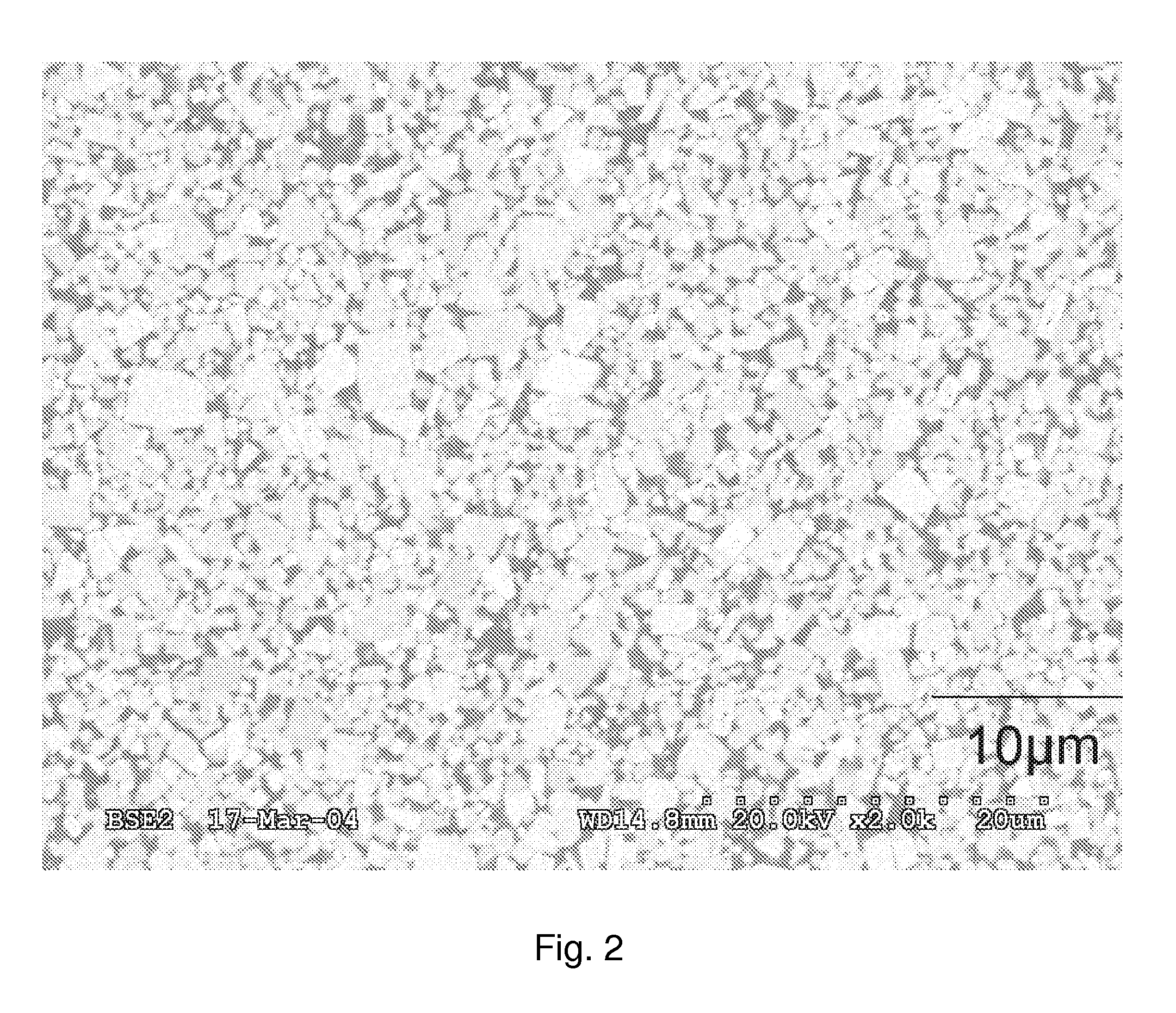Functionally graded cemented tungsten carbide
a cemented tungsten carbide and functional technology, applied in the direction of coatings, etc., can solve the problems of high hardness, wear resistance, strength, and achieve the effects of reducing the fracture toughness of cemented tungsten carbide, and reducing the fracture toughness
- Summary
- Abstract
- Description
- Claims
- Application Information
AI Technical Summary
Benefits of technology
Problems solved by technology
Method used
Image
Examples
Embodiment Construction
[0042] Presently preferred embodiments of the invention will be described by reference to the drawings. It will be readily understood that the features of the present invention, as generally described and illustrated in the figures herein, may be varied. Thus, the following more detailed description of the embodiments of the present invention, as represented in FIGS. 1 through 15, is not intended to limit the scope of the invention, as claimed, but is merely representative of certain preferred embodiments of the invention.
[0043] The present invention relates to a new type of functionally graded composite materials. These materials are formed via liquid process sintering. In general, these materials include a supply of a hard phase. An example of a hard phase is tungsten carbide.
[0044] The hard phase is embedded within a metal matrix such that there is a gradient in the amount of metal matrix. More specifically, the amount of matrix metal in the composite is graded from a first ref...
PUM
| Property | Measurement | Unit |
|---|---|---|
| depth | aaaaa | aaaaa |
| temperatures | aaaaa | aaaaa |
| temperatures | aaaaa | aaaaa |
Abstract
Description
Claims
Application Information
 Login to View More
Login to View More - R&D
- Intellectual Property
- Life Sciences
- Materials
- Tech Scout
- Unparalleled Data Quality
- Higher Quality Content
- 60% Fewer Hallucinations
Browse by: Latest US Patents, China's latest patents, Technical Efficacy Thesaurus, Application Domain, Technology Topic, Popular Technical Reports.
© 2025 PatSnap. All rights reserved.Legal|Privacy policy|Modern Slavery Act Transparency Statement|Sitemap|About US| Contact US: help@patsnap.com



